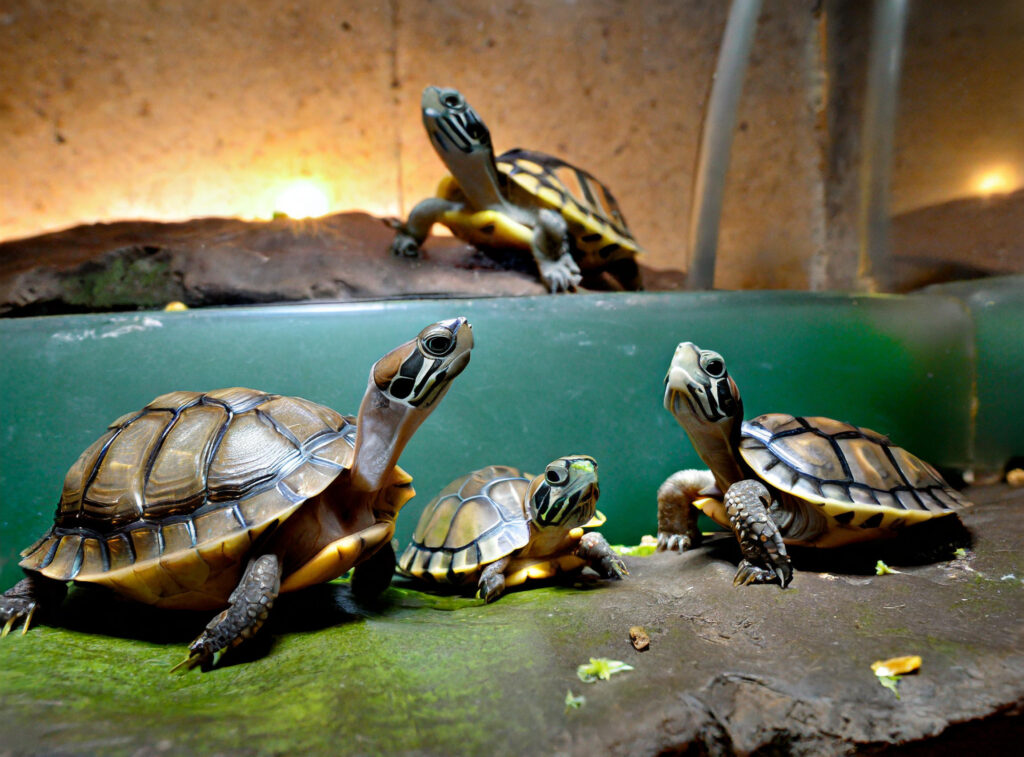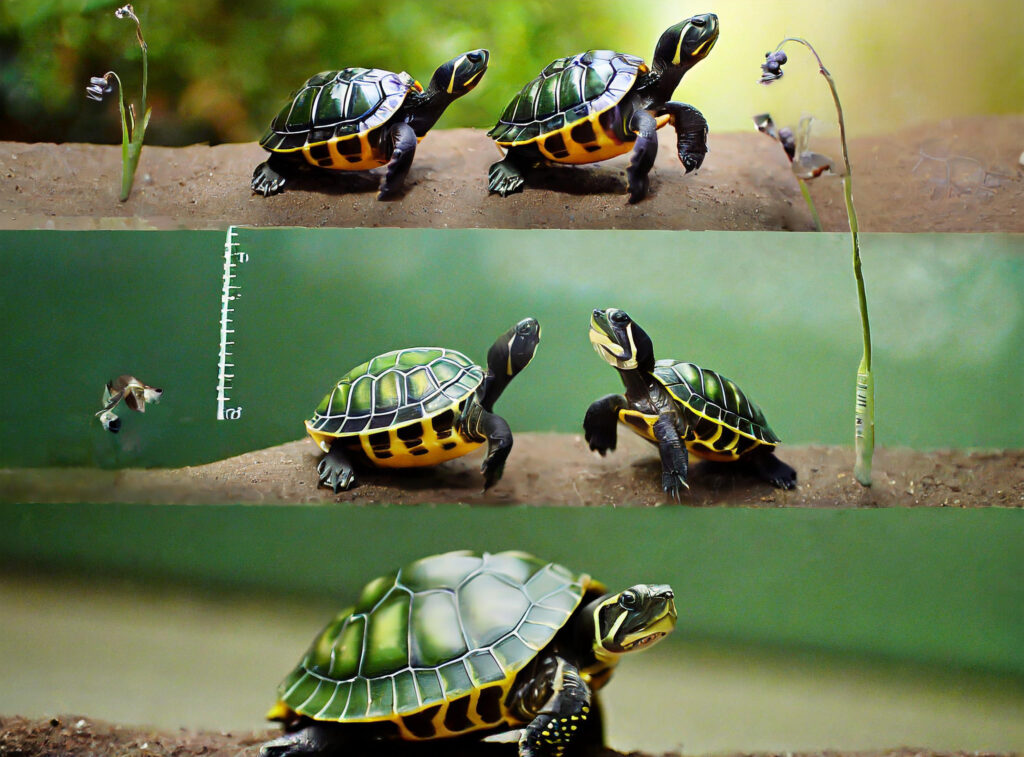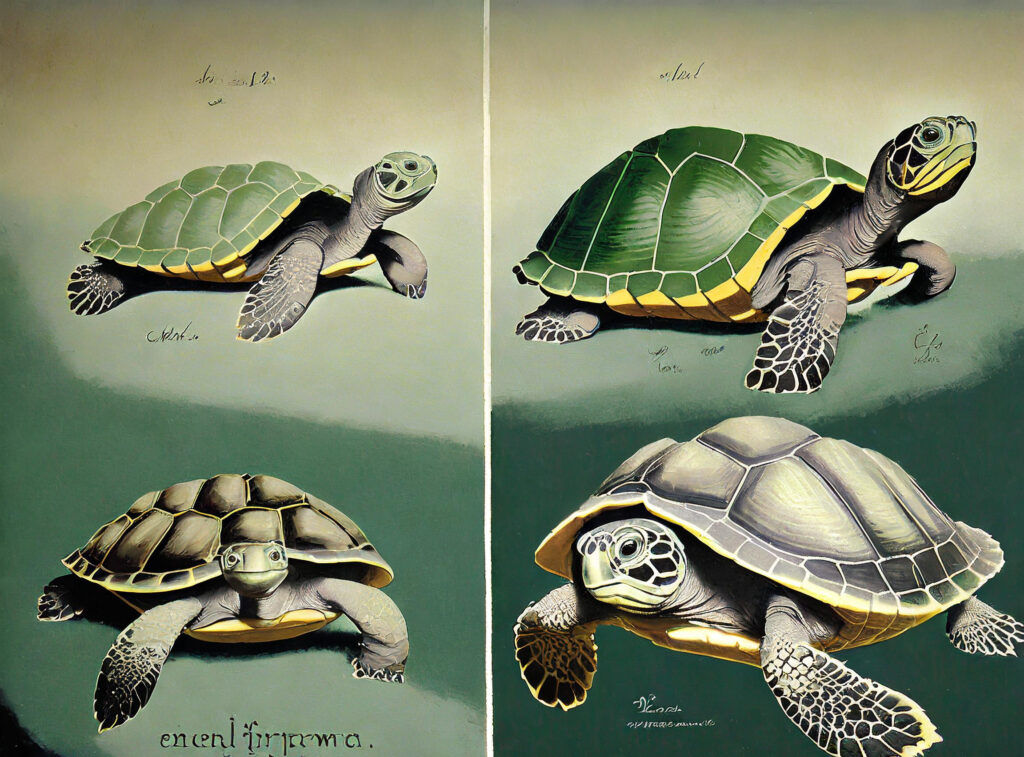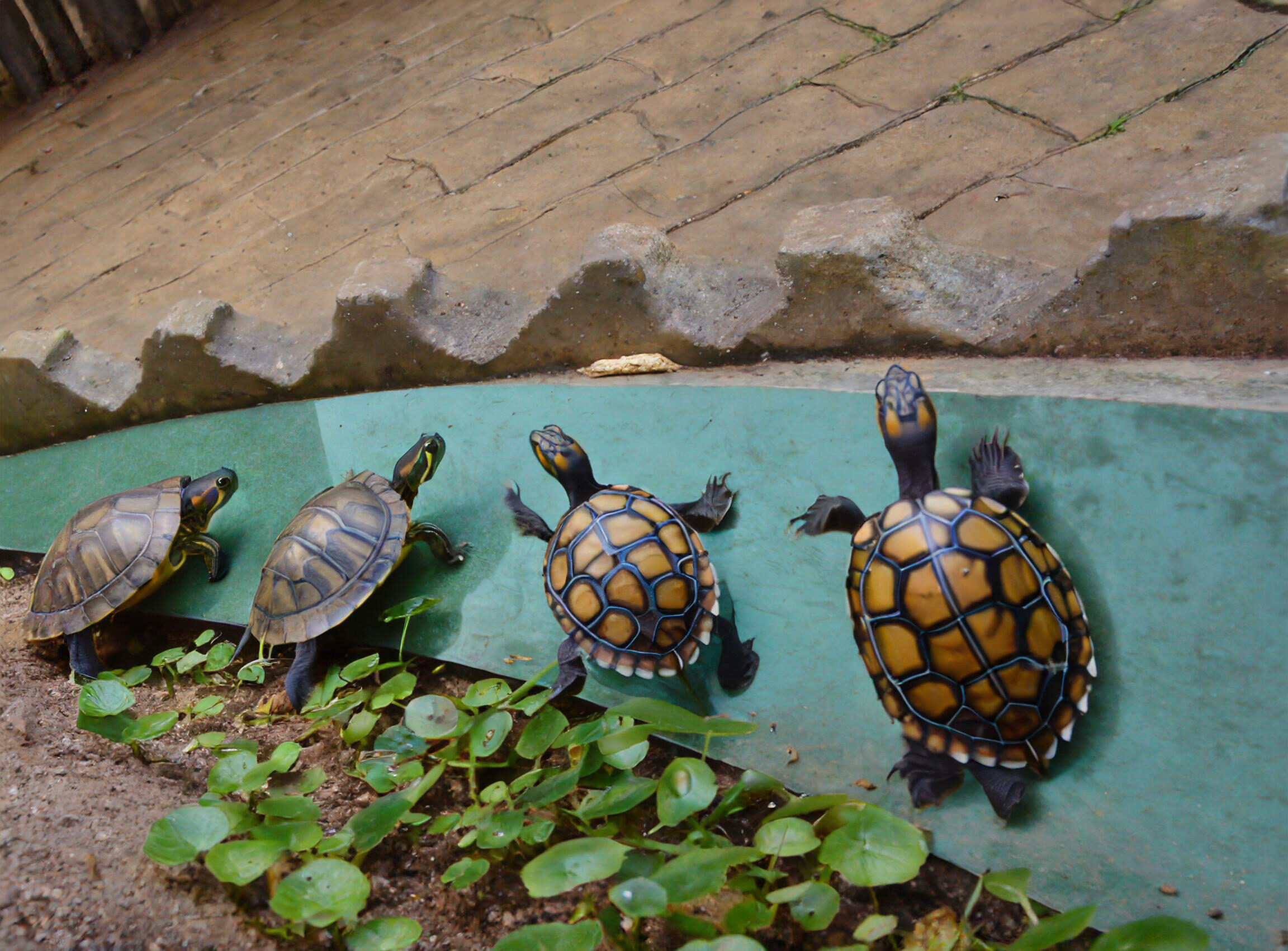A turtle’s life cycle involves multiple stages, including hatching, growth, reproduction, and aging, as the individual progresses from an egg to a mature adult. During each phase, the turtle adapts to its environment, undergoes physical changes, and experiences various reproductive behaviors.
These evolutionary developments help turtles survive and ensure the continuation of their species.

The Stages Of A Turtle’s Life Cycle
Turtles are fascinating creatures that go through several distinct stages in their life cycle. Each stage is crucial for their survival and contributes to the overall biodiversity of our planet. In this blog post, we will delve into the three main stages of a turtle’s life cycle: nesting and egg development, hatching and emergence, and the juvenile and adult phases.
Nesting And Egg Development
When it comes to nesting and egg development, female turtles play a vital role. These majestic creatures often return to the same breeding grounds year after year. They carefully select a suitable spot on the sandy beach to lay their eggs. Using their powerful flippers, they create a hole in the sand and deposit their eggs.
The eggs are then left to develop in the warmth of the sun. This incubation period is critical for the embryo’s development. The temperature within the nest determines the sex of the offspring, with warmer temperatures producing more females and cooler temperatures resulting in more males.
After an incubation period of several weeks or months, it’s time for the eggs to hatch, and the next stage of the turtle’s life cycle begins.
Hatching And Emergence
Hatching is a momentous occasion for turtle hatchlings. Once the eggs hatch, these tiny creatures have to navigate their way out of the nest and towards the water, which can often be a treacherous journey. They use their natural instinct to follow the path illuminated by the moonlight, and any obstacles or predators they encounter can greatly reduce their chances of survival.
Upon reaching the shoreline, hatchlings immediately scramble toward the water, where their life as aquatic beings truly begins. While some turtle species hatch during the day, most prefer to emerge under the cover of darkness to increase their chances of survival.
Juvenile And Adult Phases
As hatchlings venture into the water, they undergo a rapid transformation. To survive this vulnerable period, they rely on a diet mainly composed of small aquatic invertebrates. During this juvenile phase, turtles grow rapidly and develop their characteristic hard shells, providing them with protection against predators and harsh environmental conditions.
Once they reach maturity, turtles enter the adult phase of their life cycle. Adult turtles have a wide range of diets depending on their species, with some being carnivores, herbivores, or omnivores. Their lifespan can vary greatly, with some turtles living for several decades or even over a century.
Throughout their adult lives, turtles play a significant role in maintaining the balance of aquatic ecosystems. They contribute to nutrient cycling, help control populations of various organisms, and serve as indicators of ecosystem health. These incredible reptiles are not just fascinating creatures, but also essential components of our planet’s biodiversity.

Environmental Influences And Challenges
Understanding the environmental influences and challenges that turtles face throughout their life cycle is crucial for their survival. From nesting habitat conditions to predation risks and human impact, these factors significantly influence turtle populations worldwide. Let’s explore each of these aspects in more detail.
Nesting Habitat Conditions
The nesting habitat plays a vital role in the overall success of a turtle’s life cycle. Nesting sites can vary depending on the turtle species, but they often prefer sandy beaches, dunes, or soft soil close to water bodies. Temperature and moisture are key factors that affect the incubation and hatching process. Female turtles search for suitable areas to lay their eggs, meticulously selecting locations that provide the optimal conditions for the eggs to develop. These sites must be undisturbed and shielded from excessive predation or disturbances to ensure successful reproduction. Furthermore, any changes in temperature or moisture levels due to climate change can have a profound impact on turtle populations, affecting their ability to reproduce.
Predation And Survival Risks
Turtles face numerous predation and survival risks throughout their life cycle. Once the eggs are laid, they become vulnerable to predators such as raccoons, dogs, and birds. The presence of natural predators is a natural part of the ecosystem and helps maintain the balance, but when predation rates become too high, it can have a detrimental effect on turtle populations. After hatching, young turtles must navigate their way to the water, facing additional risks from predators and obstacles along the way. During their aquatic life stage, turtles remain susceptible to predation from larger aquatic animals, such as alligators or larger fish. These predation risks pose significant challenges to turtle populations, affecting their overall survival and recruitment rates.
Human Impact And Conservation Efforts
Unfortunately, human impact poses a significant threat to turtle populations worldwide. Overdevelopment of coastal areas has led to the destruction of nesting sites and the alteration of beach habitats. Pollution, including plastic debris and chemical runoff, can also harm turtles when they mistakenly ingest or become entangled in these hazardous materials. Additionally, activities such as illegal harvesting and unsustainable fishing practices can further impact turtle populations. Fortunately, there are ongoing conservation efforts to mitigate these challenges. Conservation organizations work diligently to protect nesting habitats, implement turtle-friendly lighting practices to prevent disorientations, and promote public awareness about the importance of conserving these remarkable creatures.
In conclusion, environmental influences and challenges play a critical role in the life cycle of turtles. Nesting habitat conditions, predation risks, and human impact all impact the survival and reproductive success of turtle populations. By understanding these factors and taking steps towards sustainable practices and conservation efforts, we can help ensure the continued existence of these fascinating creatures for future generations to enjoy.

Frequently Asked Questions For A Turtle’s Life Cycle
What Is The Life Cycle Of Turtles?
The lifecycle of turtles starts with eggs that are laid on sandy beaches. After hatching, baby turtles make their way to the ocean where they grow and mature. They reach sexual maturity between 10-30 years and continue to reproduce throughout their lives.
Turtles can live for several decades.
What Is The Life Process Of Turtle?
The life process of turtles involves hatching from eggs, growing through various stages, finding food, mating, and laying eggs. They adapt to their environment and can live for many years, with some species even outliving humans.
What Happens In The Juvenile Stage Of A Turtle?
The juvenile stage of a turtle is a critical period for growth and development. During this time, the turtle undergoes significant changes, such as shell formation and maturation. They also begin to explore their surroundings and learn crucial survival skills.
Juvenile turtles are still vulnerable to predators and rely on their instincts to stay safe.
How Long Are Turtles Pregnant?
Turtles are pregnant for an average of 45 to 70 days, depending on the species.
Conclusion
Turtles undergo an incredible life cycle that is worth exploring. From hatching as tiny hatchlings to reaching full maturity, their journey is both fascinating and vital for their survival. Understanding the intricacies of a turtle’s life cycle can help us appreciate the importance of protecting their habitat and preserving their species.
So, let’s continue to learn, educate, and raise awareness about these remarkable creatures, ensuring a safe and bright future for turtles to thrive in our world.






Leave a Reply